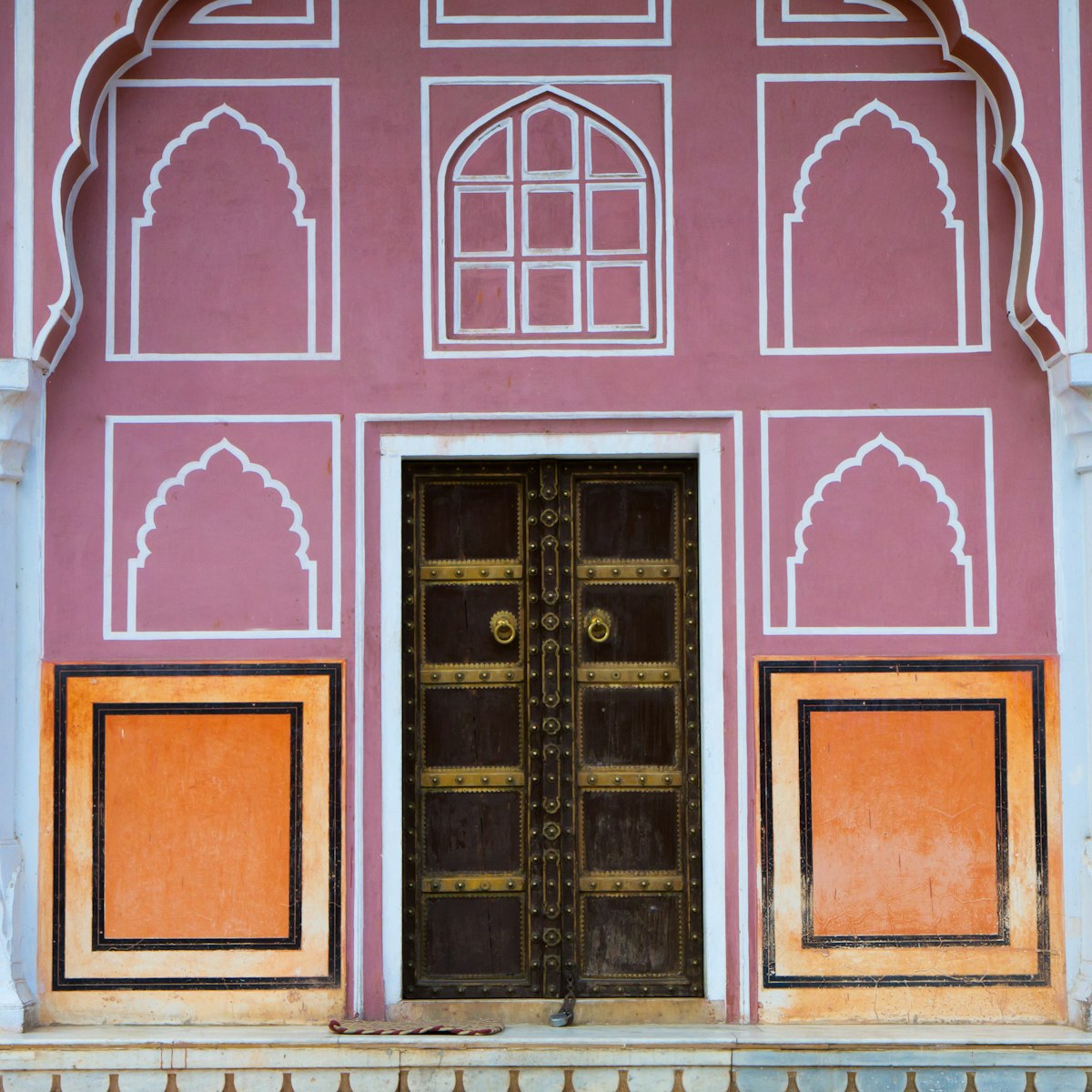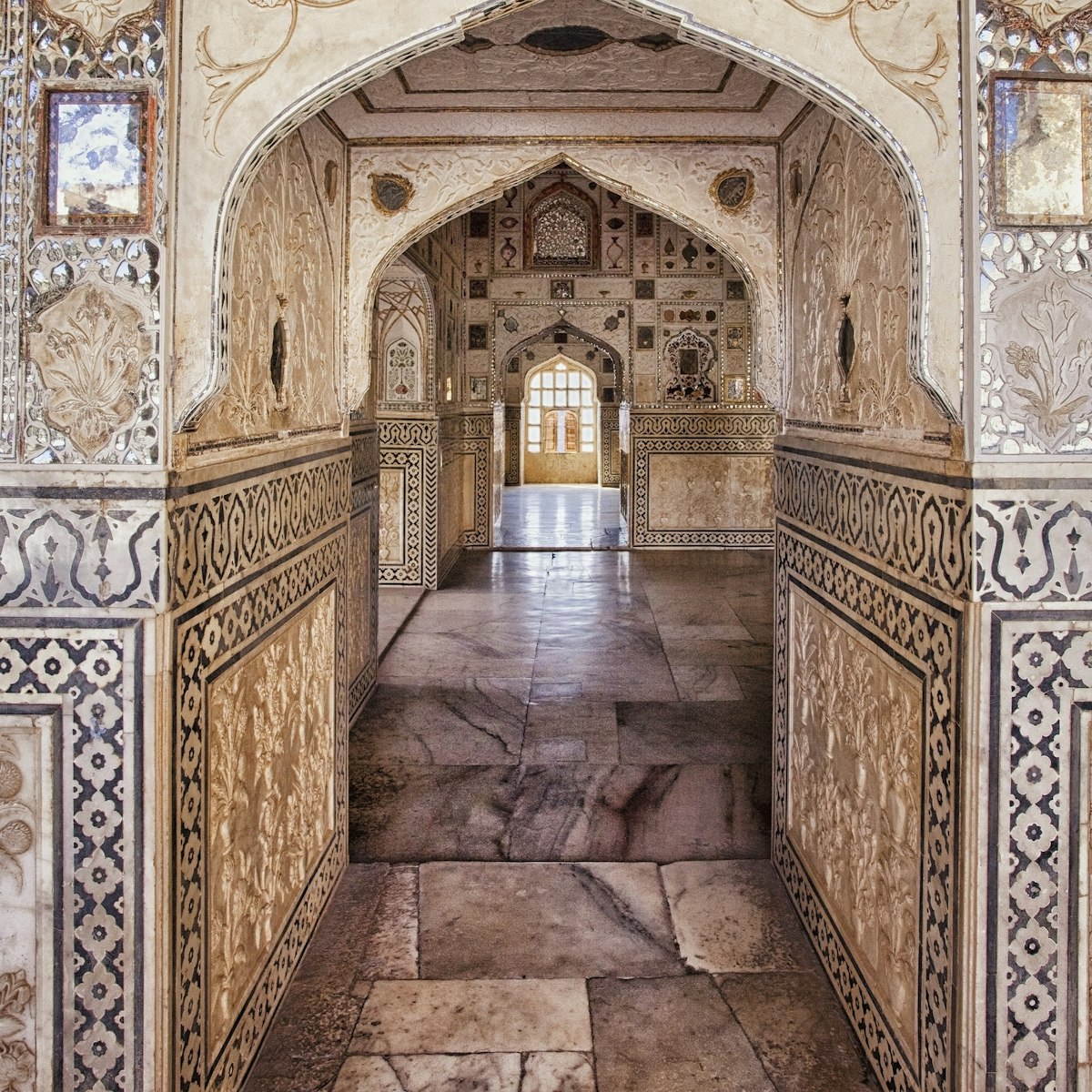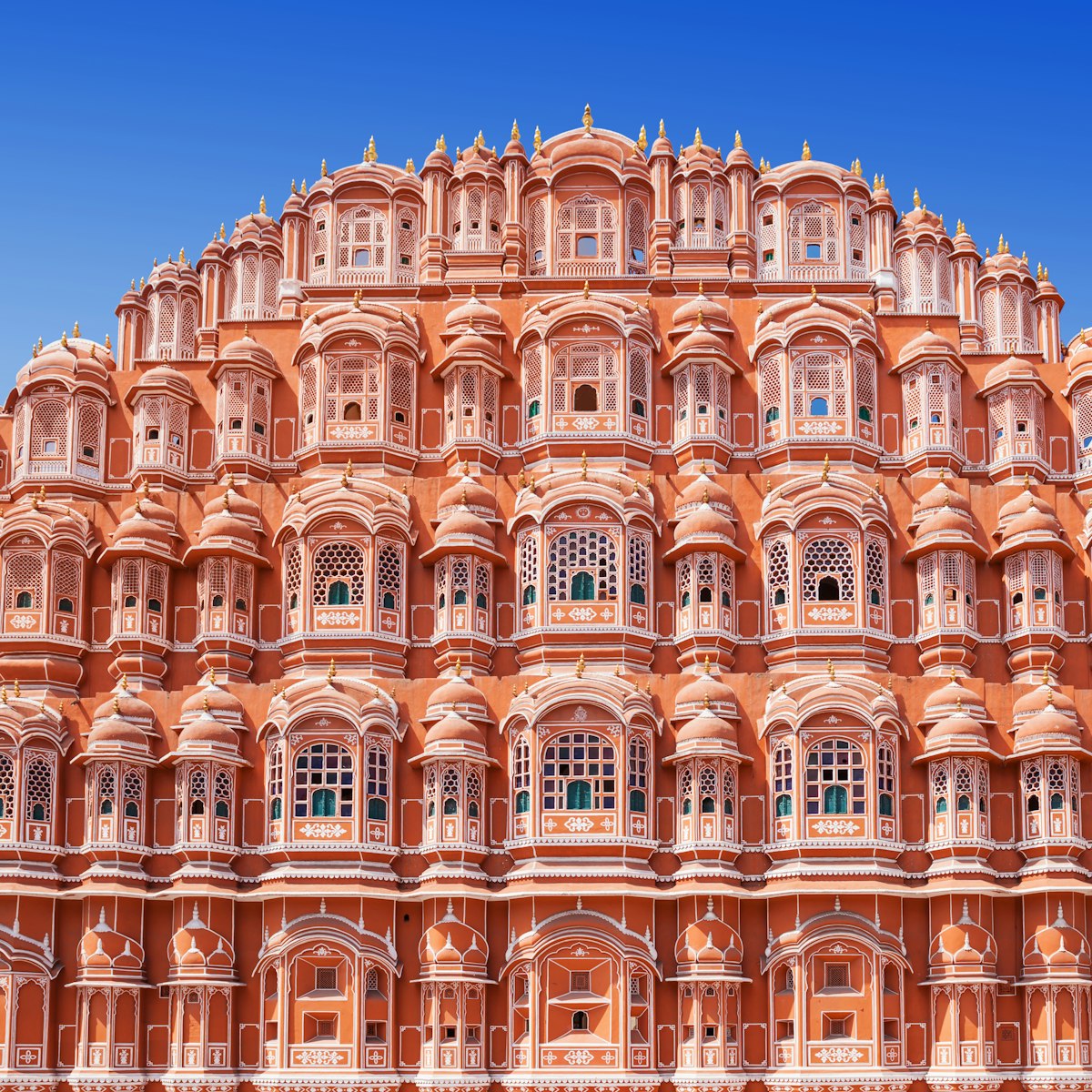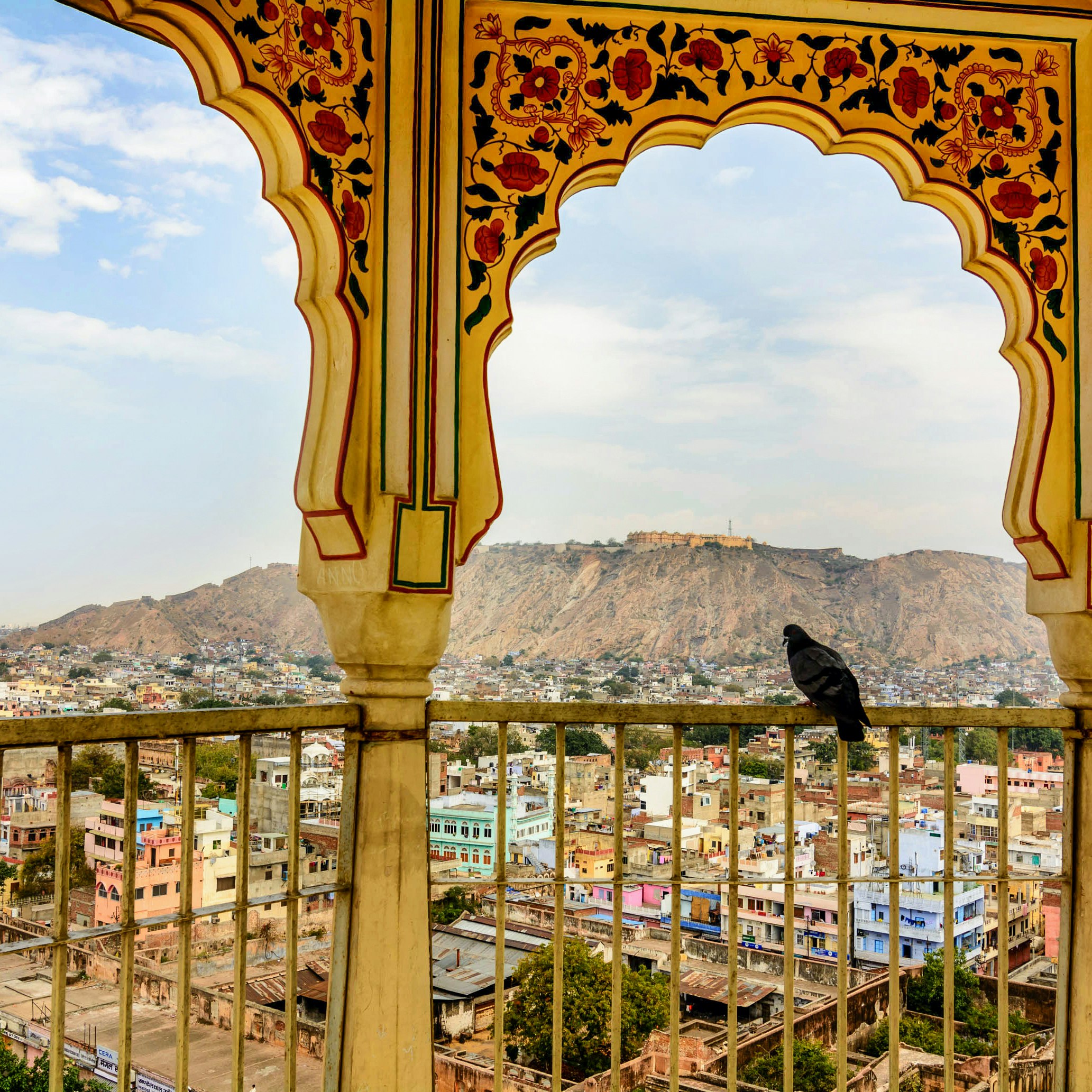A scrubby green hill rises above Amber and is topped by the imposing Jaigarh, built in 1726 by Jai Singh. The stern fort, punctuated by whimsical-hatted lookout towers, was never captured and has survived intact through the centuries. It’s an uphill walk (about 1km) from Amber and offers great views from the Diwa Burj watchtower. The fort has reservoirs, residential areas, a puppet theatre and the world’s largest wheeled cannon, Jaya Vana.
During the Mughal empire, Jaipur produced many weapons for the Mughal and Rajput rulers. The cannon, a most spectacular example, was made in the fort foundry, which was constructed in Mughal times. The huge weapon dates from 1720, has a barrel around 6m long, is made from a mix of eight different metals and weighs 50 tonnes. To fire it requires 100kg of gunpowder, and it has a range of 30km. It’s debatable how many times this great device was used.
A sophisticated network of drainage channels feeds three large tanks that used to provide water for all the soldiers, residents and livestock living in the fort. The largest tank has a capacity for 22.8 million litres of water. The fort served as the treasury of the Kachhwahas, and for a long time people were convinced that at least part of the royal treasure was still secreted in this large water tank. The Indian government even searched it to check, but found nothing.
Within the fort is an armoury and museum, with the essential deadly weapons collection and some royal knick-knacks, including interesting photographs, maps of Jaigarh, spittoons, and circular 18th-century playing cards. The structure also contains various open halls, including the Shubhat Niwas (Meeting Hall of Warriors), which has some weather-beaten sedan chairs and drums lying about.
Admission is free with a valid ticket from the Jaipur City Palace that is less than two days old.





